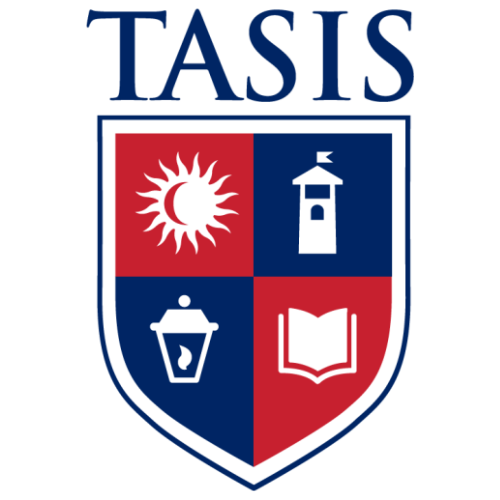I grew up in the United States. I attended kindergarten and public schools and then continued my education at university. My graduating class in high school in 1977 was over 500 students, without a single student of color. Through no fault of my own, I grew up in a pre-baked “white bread” American dream education system that eventually led me to a good career. In fact, my own educational background has actually made equal access to education difficult to understand. My public school system offered accelerated, regular curriculum and slow learner classes. I know that some wealthier parents sent their children on a different route through Montessori and prep schools and then on to Ivy League universities – but that didn’t interfere with my own quality education.
In less wealthy families, many students attend school, graduate and enter the tertiary level of education, even if they must depend on scholarships and part-time work to cover costs. We call that “pulling yourself up by your own bootstraps.” But what if you don’t have any boots? Economics plays a much harsher role in developing countries where poverty levels and conflict block access to any educational institution, except the school of hard knocks. But the question I have to ask myself is that when students do get to school, do they have equal access to a quality education?
In 2017, The Atlantic1 published an online article in which the Organization for Economic Cooperation and Development (OECD) scrutinized 35 wealthy countries to determine how student performance was based on socioeconomic backgrounds. The average variation was set at 14%. The United States was ranked at 17%, which means that on average in America, 17% of students coming from less wealthy families underperform. I guess I was very lucky to land on the right side of that deviation by pure chance. Japan was ranked at 9% variation. That means virtually no educational difference between rich and poor kids. John Mock, an anthropologist at Temple University’s Japan campus explained, “In Japan, you may have poor areas, but you don’t have poor schools.” Now that is a different perspective of equal access to educational wealth.
So let’s take money out of the equation for a minute. Let’s consider quantity versus quality. Unfortunately, the number of students enrolled in school is not a good indicator of the quality of education. A good curriculum and well-paid teachers are an integral part of quality education. Take Japan as an example. Becoming a teacher in Japan isn’t easy. The Atlantic article remarks that getting a teaching certificate in Japan is equivalent to passing the American bar exam. This means that teaching is considered at a different professional level than in other countries. Even after certification, teachers get reviewed every three years for promotions as an incentive for better performance. This is a different education model embodied in national policy. I believe that national education policies are a critical success factor in achieving equal access to a quality education.
Japan has an education policy in which schools do not hire teachers. Teachers are hired at regional levels and are are assigned to schools within that region. During three-year rotation periods, teachers instruct at different schools within that region before being assigned full-time to a school. That enables teachers to learn from different educational environments and from their students. Both the Japanese government and the regions fund this education system. The bottom line is that teachers in Japan are paid more than the published OECD country average and are considered a “precious national resource.”
Learning depends not only on resources invested in the school system, but also on policy implementation. How can countries share best practices in education policies to ensure equity and inclusion? I found the answer in a surprising place. In their fight against poverty, the World Bank Group has focused its efforts in education in two strategic directions: reforming education systems at the country level and building a high-quality knowledge base for education reforms at the global level.
The Systems Approach for Better Education results (SABER)2 is an online system that collects comparable data on the policies and institutions of education systems around the world and benchmarks them against good practice to strengthen the knowledge base for education policy reforms. The model3 contains three components: education cycles; quality resources and system support; and governance and finance.
But across the board, the model’s foundation is Equity & Inclusion (E&I) and Education Resilience, which means learning for all. SABER provides answers for government in facing three challenges to E&I4:
- Many children never enroll in school or enroll late means Invest Early
- Many children drop out of school without completing their basic education means Invest Smartly
- More and more children do not learn enough while in school means Invest for All
Countries that overcome these educational challenges will see positive results in relevant skills for productivity and employment, better health education and better stewardship of national resources.
Coming back to the topic of equal access, there are so many variables to consider: economics, gender, culture, physical and mental health, war and conflict that countries need to resolve. However, we cannot forget the other side of the equation: Once students are in school that they deserve a quality education. As John Ruskin reminds us, “Quality is never an accident; it is always the result of intelligent effort.”
by Mary Adams, AWC The Hague
1 Semuels, Alana, Japan Might Be What Equality in Education Looks Like, theatlantic.com, August 2, 2017
2 http://wbgfiles.worldbank.org/documents/hdn/ed/saber/supporting_doc/Background/SABER_Overview_Paper.pdf
3 http://saber.worldbank.org/index.cfm
4 Wodon, Quentin, World Bank Group, What Matters Most for Equity and Inclusion in Education Systems: Framework Paper, February 29, 2016


